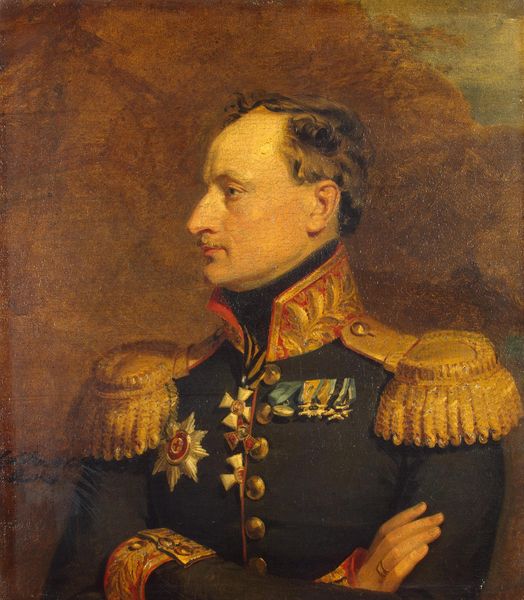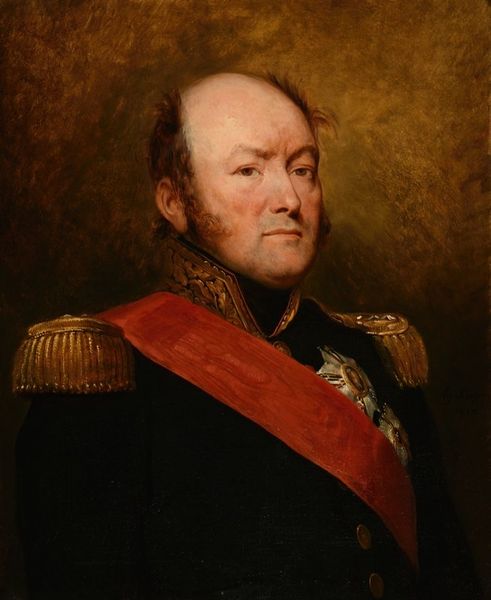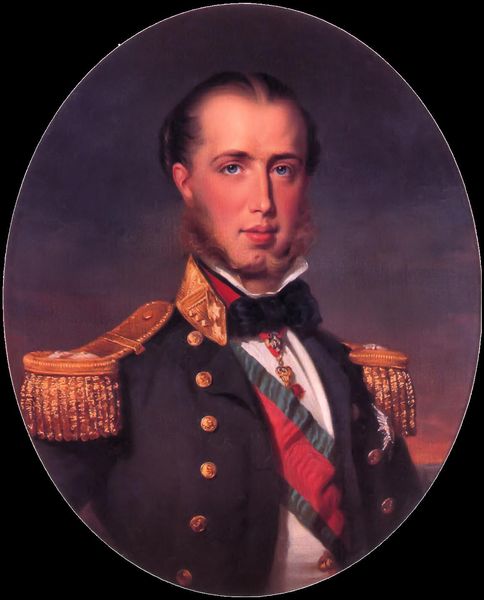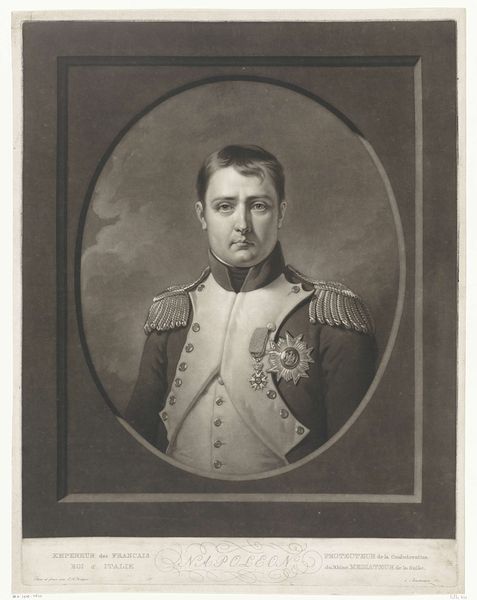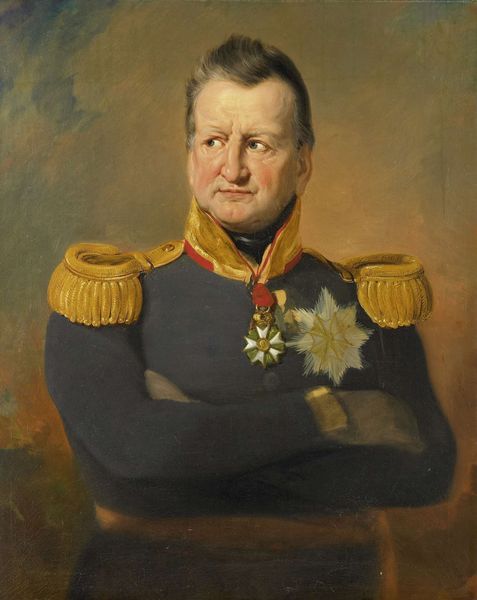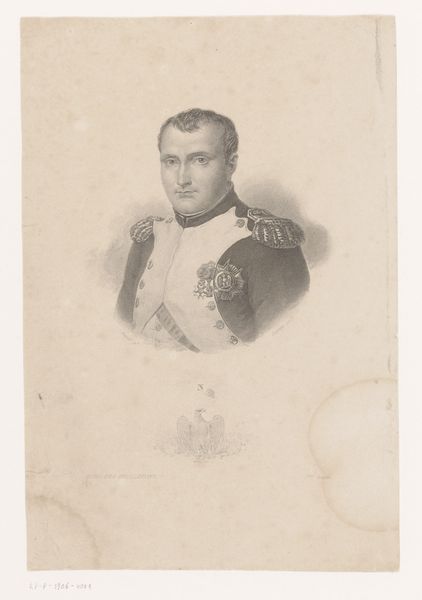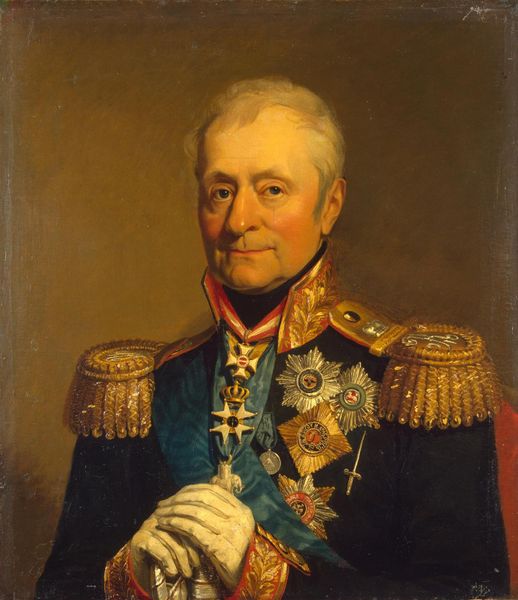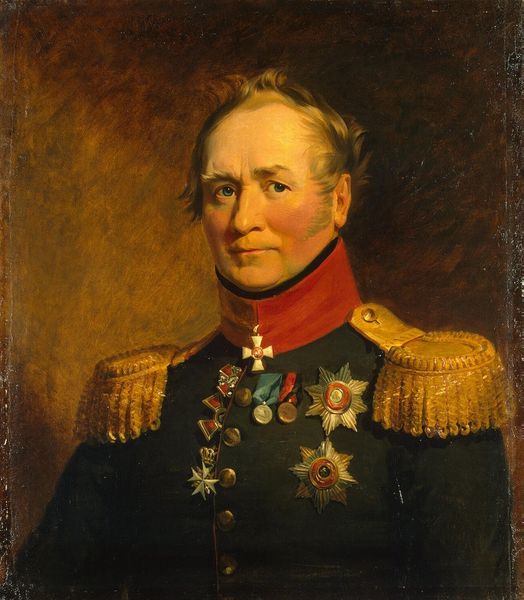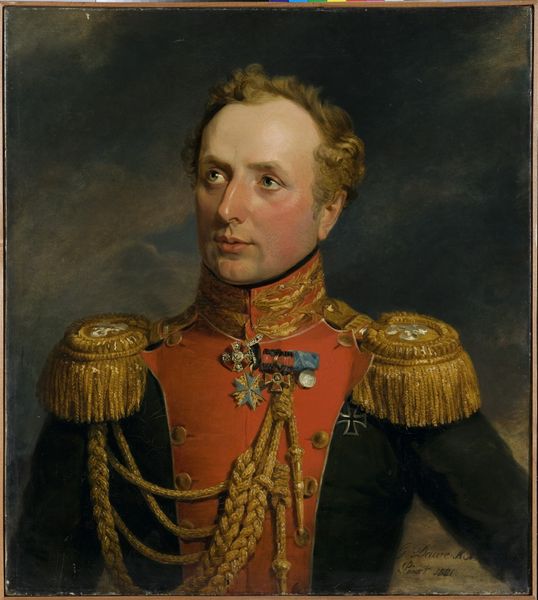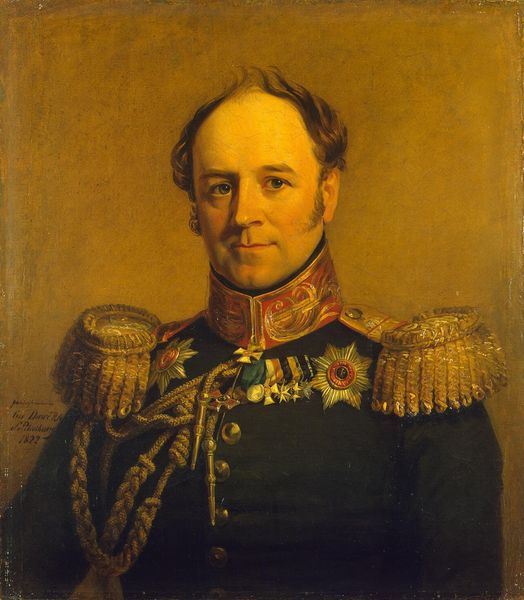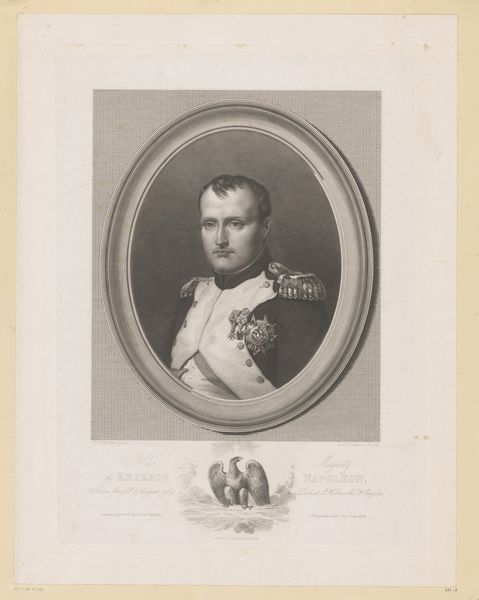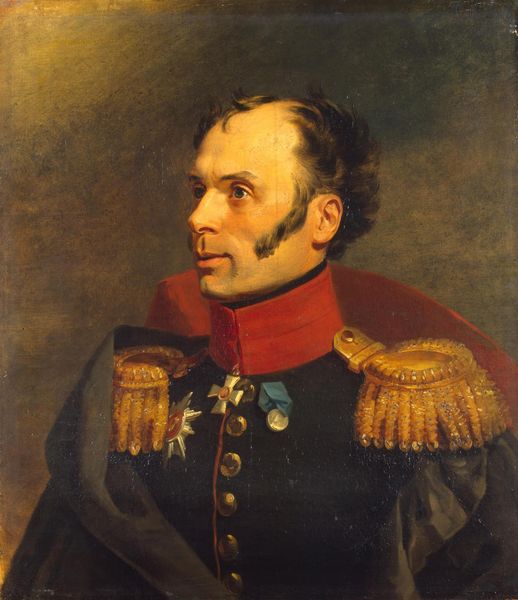
painting, oil-paint
#
portrait
#
neoclacissism
#
painting
#
oil-paint
#
romanticism
#
history-painting
#
academic-art
Copyright: Public domain
Editor: So, this is Charles de Steuben's "Portrait of Napoleon I," painted in 1812 using oil paints. I find it rather imposing; there’s a lot of symbolic weight, but also something kind of…sad in his eyes. What strikes you about it? Art Historian: It's interesting that you pick up on that sadness. Considering my fascination with symbols and their lasting cultural power, I immediately notice the ensemble of objects at the bottom - a sword, laurel wreath, and bicorne hat. These were carefully chosen not just as identifiers of Napoleon’s status but as powerful mnemonic devices for recalling his military prowess and imperial ambition. What emotions do they stir in you? Editor: I see them as symbols of victory, but positioned there, almost discarded… it’s a bit melancholic, as if the glory days are fading. The olive wreath feels less triumphal and more…funereal? Art Historian: Precisely. The arrangement creates a potent juxtaposition. On one hand, Napoleon's elaborate uniform is clearly meant to project power. Yet, his somewhat weary gaze undercuts that bravado, suggesting an awareness of the fragility of power. This contrast speaks volumes. It acknowledges the heroic narrative surrounding Napoleon, while simultaneously hinting at its eventual demise. Think of what happened after 1812. What lasting visual legacy is suggested here? Editor: I guess the painting hints at his downfall. Even at the height of his power, perhaps he knew it couldn’t last forever. It’s fascinating how symbols, especially these martial symbols, can be repurposed or re-contextualized to convey such complex and even contradictory meanings. Art Historian: Exactly. The power of iconography lies in its adaptability and endurance. An image like this carries layers of historical, cultural, and emotional weight, allowing it to resonate differently across generations. You’ve gained new insight into its depth. Editor: Yes, definitely. It’s not just a portrait of a powerful man; it's a meditation on power itself.
Comments
Join the conversation
Join millions of artists and users on Artera today and experience the ultimate creative platform.
